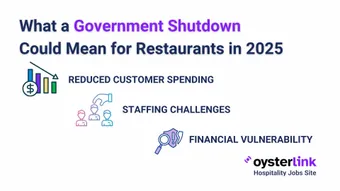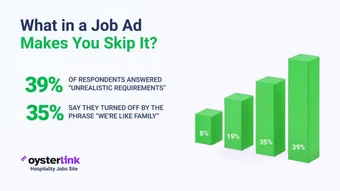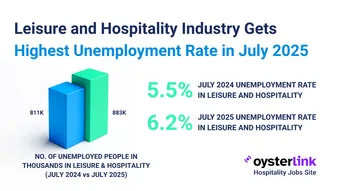New York City – November 14, 2025 – As North America prepares to host the first 48-team FIFA World Cup, international travel data analyzed by OysterLink shows warning signs for the U.S. hospitality sector. Despite record hotel rates in major cities, slower inbound travel and new visa restrictions may limit America’s share of the tournament’s economic windfall.
Global Interest High, But Travel to U.S. Softens
The U.S. will host 78 of 104 fixtures across 11 cities, from New York to Los Angeles. Yet inbound travel forecasts show a downturn at a crucial time.
According to the U.S. Travel Association, international arrivals are projected to fall from 72.4 million in 2024 to 67.9 million in 2025—a 6.3% decline. Spending by international visitors is also expected to dip to around $173 billion.
The timing is problematic. A U.S. $250 “visa integrity fee” took effect on October 1, 2025, just months before kickoff. The fee, applied to travelers from non–Visa Waiver countries, could further discourage attendance. Although citizens of 42 nations remain eligible to enter through the ESTA program, long wait times for U.S. visas continue to constrain recovery in key markets such as Brazil, India, and China.
Hotel Rates Soar Ahead of Demand
Across the U.S., host-city hotels are already commanding premium prices. New York City leads the pack at $583 per night, followed by Houston at $146, representing a 55% year-over-year increase in average daily rates (ADR) across U.S. host markets.
Data taken from Lighthouse
However, the demand picture tells a different story. Many cities are reporting single-digit occupancy for tournament dates, indicating that international travelers are waiting for ticket and schedule confirmation before booking.
Comparatively, Canadian host cities have seen +92% ADR growth, while Mexico’s have surged +114%, underscoring a stronger early demand curve outside the U.S.
Booking Curve Yet to Break
From January through September 2025, U.S. host cities posted +14% year-over-year hotel revenue growth, but when World Cup weeks are excluded, that figure drops to +6%—barely double the +3% national average.
Industry analysts expect a surge after the October 27–31 ticket draw and December 5 match-schedule release, when fans finally learn where their teams will play. Until then, hotels are maintaining high rates and, in some cases, holding inventory or imposing minimum-stay rules similar to those already affecting 95% of hotels in Vancouver.
Travel Barriers Could Shift Demand North and South
With more than 6 million of the 7.1 million total tickets still unsold, the next six months will determine whether international visitors choose U.S. cities or opt for more accessible Canadian and Mexican destinations.
Economic headwinds, including a strong U.S. dollar, elevated airfare, and complex visa requirements, may suppress long-haul travel to the U.S., pushing fans to fly into nearby host countries with more flexible entry rules.
If that trend holds, U.S. hotels risk missing out on billions in potential revenue unless domestic and regional travelers fill the gap.
U.S. Hospitality’s Path Forward
Analysts recommend a data-driven approach as booking momentum builds:
- Dynamic pricing to balance short-term gains with long-term occupancy.
- Flexible stay policies to attract both international and domestic fans.
- Targeted marketing aimed at travelers from Canada, Mexico, and the U.K., which remain the U.S.’s strongest inbound markets.
While the U.S. may face a slower start, the World Cup’s scale—projected to attract 5 million total visitors across North America—offers massive upside. Once tickets and match logistics stabilize, the U.S. could still see one of its biggest surges in hotel demand since 2019.
“The World Cup will create enormous opportunity, but only for markets that stay flexible. Rates are already high, but fans might be holding off until travel becomes easier and match details are final,” said Milos Eric, co-founder and general manager of OysterLink.
The 2026 FIFA World Cup will test whether the U.S. hospitality sector can convert global excitement into bookings amid tightening travel conditions. With rates already up more than 50% but occupancy lagging, the difference between a boom and a bust may hinge on timing, and how quickly the industry adapts once fans start locking in their stays.
About OysterLink
OysterLink is a job platform for restaurant and hospitality professionals with over 400,000 monthly visitors. OysterLink connects talent with opportunities across the U.S., including the top-paying bartender jobs in New York City and restaurant manager jobs in New York City.
The platform also offers trend reports, expert insights, and interviews with leaders in hospitality. To explore more data-driven insights or post a job that works for today’s talent, visit www.oysterlink.com.
Media Contact
Deniz Cervatoglu
[email protected]







Loading comments...